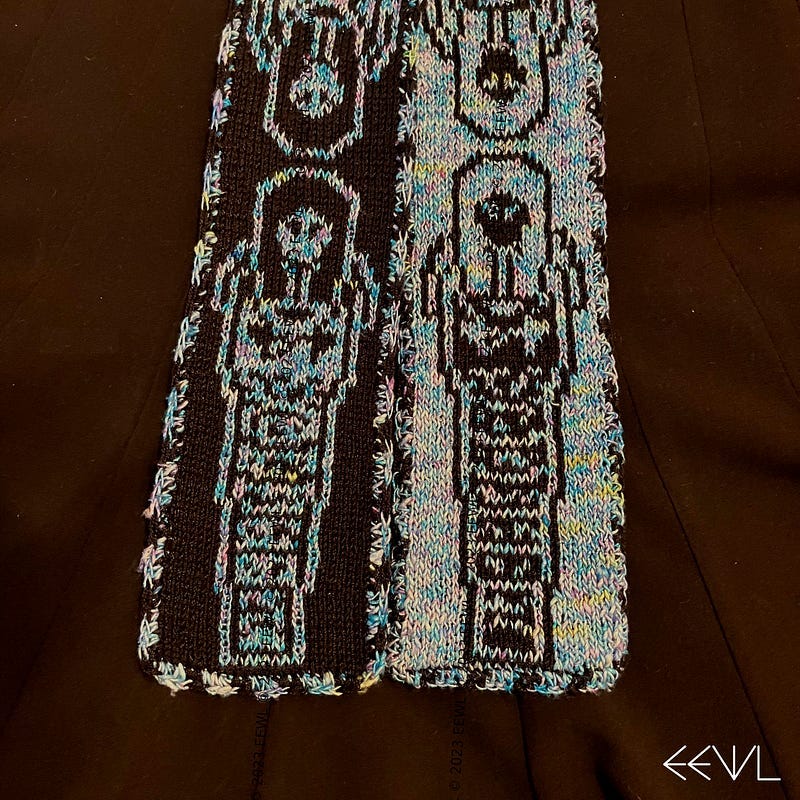Ushabti 𓅱𓈙𓃀𓏏𓏭𓀾 figures are a common sight in Ancient Egyptian museum exhibits. The Ancient Egyptians referred to their afterlife as the Aaru or the Field of Reeds, and tomb paintings often depict the deceased working at the plow. Ushabti (also known as shabti or shawabti) were buried alongside the mummy to assist with such otherworldly manual tasks, often in large numbers.
You can recognize a Ushabti figure by the farming implements he carries, along with the inscription of his owner’s name and a spell testifying to his readiness to work for the deceased. The figures are usually amulet-sized or slightly larger, and sometimes they carry the likeness of the deceased.
I’ve chosen to depict the blue faience style of the Ushabti figure, but you can find these figures ranging from simple wax shapes to elaborately carved and painted images.
I haven’t posted this pattern test in my Etsy shop, but if it’s one you like don’t hesitate to reach out.
A portion of the proceeds from each sale benefits the Theban Mapping Project Library, which provides books and literacy programs to the locals of Luxor, Egypt.
Reference: Wikipedia, Encyclopedia Brittanica
Images © 2023 EEWL
#ancientegypt #ancientegyptians #egypteantique #anticoegitto #egizi #egypte #egipto #egitto #egyptology #archaeology #mythology #hieroglyphs #hieroglyph #kingtut #kingtutankhamun #tutankhamun #eewl #mummy #ushabti #shatbi #fieldofreeds #aaru




